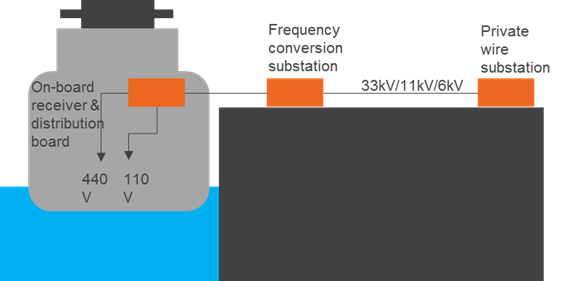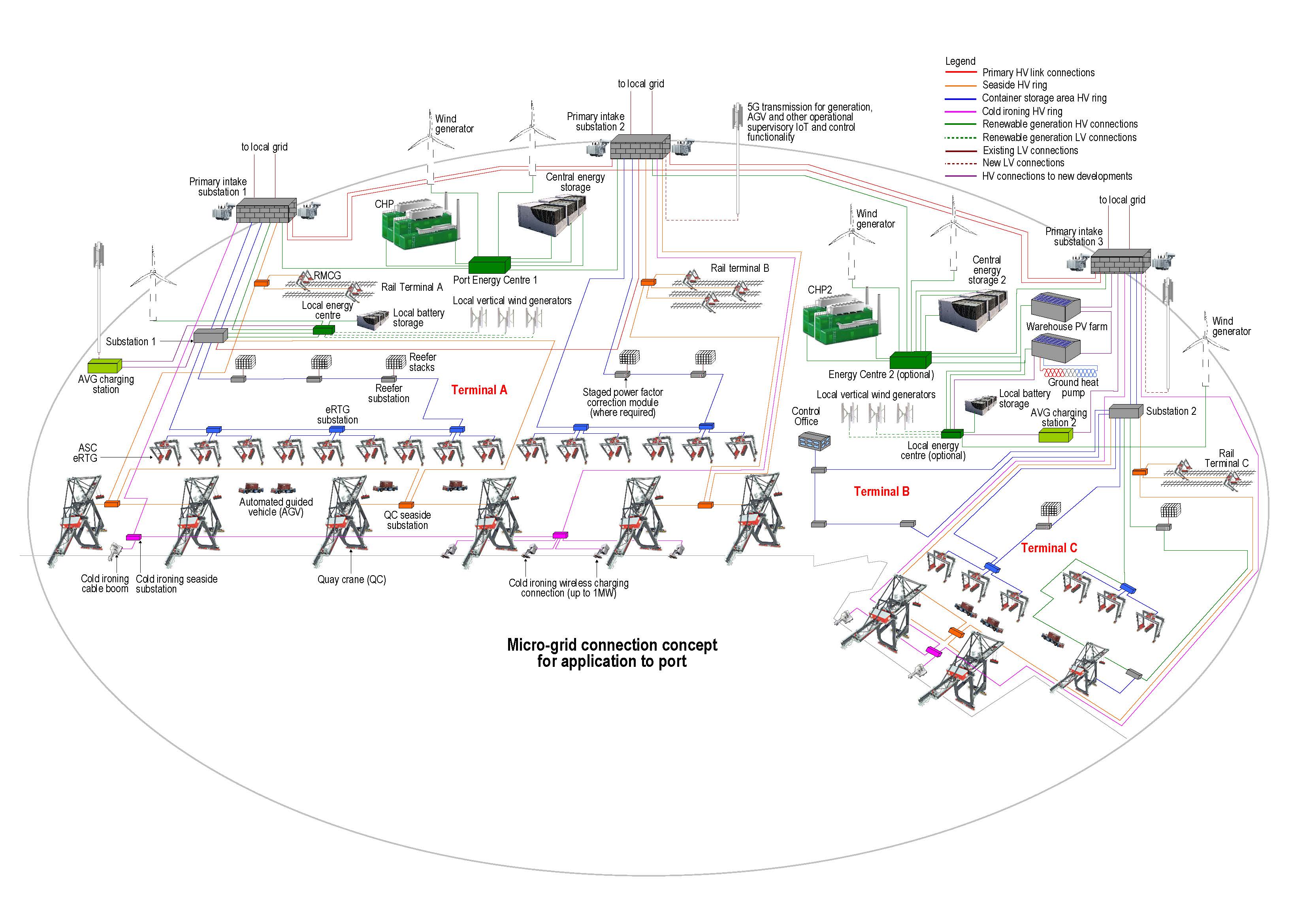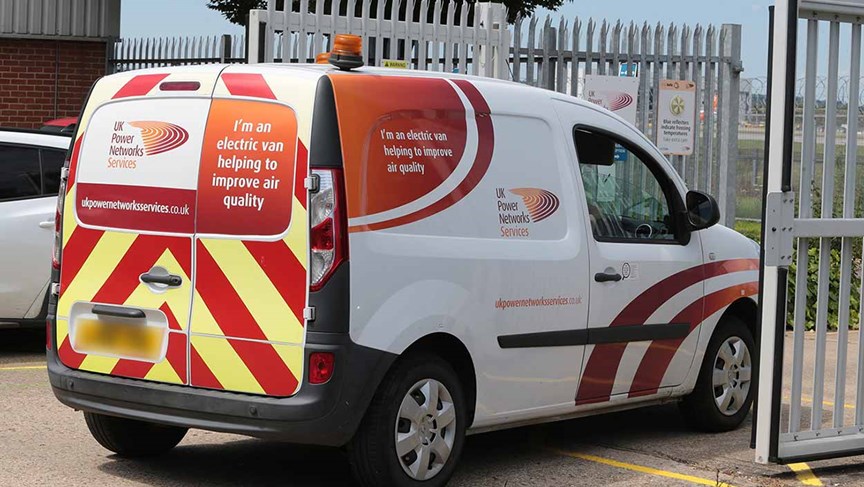Insight
UK ports are well positioned to capitalise on innovative solutions for the transition to zero emission shipping
The UK’s maritime sector has always played an important role as a primary facilitator of global trade, with shipping accounting for 95% of UK trade. Following the UK’s departure from the EU, ports will play a key role in reframing trade relationships and harnessing future opportunities.
However, with increasing trade, if no action is taken, CO2 emissions from international shipping could account for 17% of global CO2 emissions by 2050. The UK Government’s Maritime 2050 Strategy sets out its vision:
In 2050, zero emission ships are commonplace globally. The UK has taken a proactive role in driving the transition to zero emission shipping in UK waters, and to be seen globally as a role model in this field, moving faster than other countries and faster than international standards. As a result, the UK will successfully capture a significant share of the economic, environmental and health benefits associated with this transition.
The UK Government has recognised that the transport sector, with 28% of the UK’s net domestic greenhouse gas emissions, needs urgent attention if we are to realise the UK’s ambitions to be net zero by 2050. The Clean Maritime Plan published in July 2019 is the environmental route map of maritime 2050, outlining the UK’s pathway to zero emissions shipping. This includes using alternative low carbon transport fuels as well as maximising benefits from using new maritime technologies. Ports will have to play their part to develop air quality strategies and reduce emissions from port operations.
A holistic energy infrastructure strategy centred on digitalisation and clean energy enables a port’s transformational journey to become a ‘smart port’. Leading ports such as the Port of Rotterdam have set out their vision to become the world’s first smart port by deploying electrification and automation technologies. Developed technologies now permit greater use of a port’s electricity resources (grid capacity, solar PV, energy storage and other on-site generation sources) to power auxiliary requirements that reduce a ship’s fuel consumption and associated emissions. At the same time, the electrification of port equipment and ground vehicles will reduce the port’s reliance on fossil fuels. A transition to data driven solutions will further accelerate the transformation of the energy systems and provide opportunities to improve productivity.
Serving the new demand
While moored in a port, some ships will have the capability to use on-shore electricity to power the auxiliary supply. Powering the ships from on-shore electricity is often referred to as “cold-ironing” or “shore-powering”. Many ports around the world have now included cold-ironing as part of their planned infrastructure.

It is technically feasible to supply the electricity for on-board equipment using transformers to step down the grid supplied electricity and frequency conversion equipment. This enables electricity to be delivered at 60Hz or 50Hz (see figure). However, developing a globally interoperable solution will require collaboration from various stakeholders (ship owners, ports etc.) and appropriate resources. Nevertheless, cold-ironing could be used to reduce emissions and noise levels around the port.
To accommodate this increase in electricity demand, there are many options available to ports. These options include increasing the capacity of the connection to the distribution network, generating electricity locally using renewable resources (wind and solar) and using demand side response measures (with flexible grid connections and / or batteries). For any port to incorporate these initiatives, it is important to take a whole system view of its energy requirements, develop a long-term energy sourcing strategy and develop an integrated resource plan. This strategy would compare the cost of developing decentralised local energy solutions with the option of sourcing the energy from the grid.
A number of ports in the UK have already started their transition to a green powered future. The port of Milford Haven has switched its energy provider to ensure that 100% of its electricity usage is from renewable sources. Additionally, the port has invested in establishing solar panels, LED lighting, electric vehicles, marine renewables and smart energy innovations. Other ports are looking at an ‘all-electric’ future by 2030, which eliminates the use of port vehicles using fossil fuels; installs electrified cranes; employs electric port vehicles; and implements a cold ironing infrastructure to cater to future demand from ships berthed at their quays.
Decarbonising port equipment and vehicles
A number of different port equipment and vehicles can be electrified to reduce emissions (CO2, NOx, SOx and particle emissions) and operational costs. Port vehicles have frequent starts and stops and therefore could have higher particulate emissions.
For electrifying port vehicles, additional substation capacity would be required to serve the additional demand. Port equipment (such as cranes) would have to be connected to the port’s distribution network. For electric vehicles, charging points would have to be established, these could be fast charging (direct current) points or medium or slow charging (alternative current) points. Alternatively, ports could also implement busbar connected robotic arms or wireless charging infrastructure for its vehicles. Vehicles in ports work in a closed environment, which provides ideal conditions for deployment of autonomous vehicles. Self-navigating electric vehicles could complete routine driving tasks that require minimal human inputs. Apart from installing charging points for their own vehicles, ports also need to encourage uptake of electric vehicles by providing charging points for their freight users.
Another option is to use hydrogen fuel for vehicles. Hydrogen vehicles can be refuelled in minutes (three to five minutes), meaning there is no need for overnight charging. Hydrogen can be used to power heavy-duty road transport and could be used to power ships.
Embrace the digital revolution
UK ports are in a strong position to accelerate the transition to smarter, data driven and artificial intelligence managed solutions. Internet of Things (IoT) presents an opportunity to collect and analyse vast amounts of data that could be used to run real time scenarios to make better decisions.
Greater level of visibility surrounding assets is expected to reduce waiting times, optimise berthing and loading / unloading. Ports can share real-time information with third parties to smooth port operations and use any unused capacity. Better understanding and management of energy requirements would enable ports to develop new ways of balancing their energy resources, shift larger loads to off-peak pricing hours and efficiently use smart systems. Embracing the digital revolutions is essential for developing smart ports, autonomous vehicles and managing energy vectors.
The transition to new port technologies has already begun and many leading ports have started building their infrastructure. UK ports are well positioned to lead on many initiatives that would help the maritime industry achieve economic success, while also reducing emissions and increasing operational reliability.





